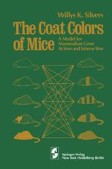Search
Search Results
-
Lipogenesis in the arctic euphausiid Thysanoessa inermis
Biosynthesis of lipids by Thysanoessa inermis collected from Balsfjorden, northern Norway, in May 1980, was examined in vitro . The highest...
-
Function of the Salt Gland
The function of avian salt glands is now well known, although development of the present knowledge spans only two decades. Before the description by...
-
Environmental control of seasonal breeding: a common final mechanism governing seasonal breeding and sexual maturation
One of the more fascinating aspects of the reproductive process is the pattern of seasonal breeding. In a way, the evolution of seasonal breeding is...
-
Circadian organization of an animal lacking a pineal organ; the young American alligator,Alligator mississippiensis
Circadian rhythms were examined in young American alligators, Alligator mississippiensis , an animal that naturally lacks a pineal organ. Individual...
-
Seasonal activity and thermoregulation in Meriones unguiculatus: A gerbil's choice
Mongolian gerbils were observed over seasonal changes in day length and temperature in an outdoor enclosure containing an extensive burrow system....
-
N-acetyltransferase in the chick retina
N-acetyltransferase activity (NAT) was measured in tissues of chicks exposed to light-dark treatments and to injections. The results support...
-
Microperoxisomes and Catalase-Positive Particles
Improved cytochemical methods for visualizing the peroxidatic activities of catalase (Fahimi 1969) by means of strong alkaline DAB media (Herzog and...
-
Effect of removal of the Harderian glands on pineal melatonin concentrations in the Syrian hamster
Peak melatonin levels which are normally present in male Syrian hamsters at 8 h after the onset of darkness in animals maintained under a light∶dark...
-
Concluding Remarks on Metabolic Aspects of Animal Peroxisomes
In the preceding chapters a considerable number of metabolic capacities have been reported. On the other hand, the functions of animal peroxisomes...
-
Melatonin affects circadian rhythmicity in lizards
Subcutaneous Silastic capsules which continuously released melatonin at low rates (10 μg/day) either (i) lengthened the period of the freerunning...
-
The presence of ecdysteroids and the variations of their level during the first adult stage of the myriapodHanseniella ivorensis Juberthie-Jupeau and Kehe (Symphyla)
Adult individuals of the Symphyla Hanseniella ivorensis had their antennae cut off at the beginning of the first adult stage; this had the effect of...
-
The adenohypophysial hormone content of the rat pars tuberalis
The pars tuberalis of the hypophysis was shown to contain LH, which increases after castration, TSH and a very low amount of PRL. FSH was found after...
-
White Spotting: Piebald, Lethal Spotting, and Belted
The preceding chapters have been concerned almost entirely with the genetic control of melanin synthesis in melanocytes which are distributed...
-
Dilute and Leaden, the p-Locus, Ruby-Eye, and Ruby-Eye-2
Recessive mutations at two loci of the mouse produce coat-color deviants which are phenotypically very similar. One of these mutations, described...
-
Blockade of voltage-dependent and Ca2+-dependent K+ current components by internal Ba2+ in molluscan pacemaker neurons
Internal Ba 2+ blocks both the Ca-dependent component, as well as the voltage-dependent component of the K + current in molluscan pacemaker neurons.
-
Pigment aggregation by melatonin in the retinal pigment epithelium and choroid of guinea-pigs,Cavia porcellus
The treatment of pigmented guinea-pigs with melatonin aggregates pigmented cells in the retinal pigment epithelium and choroid of the eye. This...
-
Microphthalmia and Other Considerations
Besides dominant spotting (W) and steel (Sl) there is another series of alleles which frequently produce white spotting when heterozygous, and...
-
Dominant Spotting, Patch, and Rump-White
There are probably no coat color determinants which have received more attention than the alleles at the W-locus (chromosome 5). Most of this...
-
Beige, Silver, Greying with Age, and Other Determinants
Beige [bg; chromosome 13 (Lane, 1965)] is a recessive mutation affecting both coat and eye color. The mutation is of particular interest because it...
-
Steel, Flexed-Tailed, Splotch, and Varitint-Waddler
The alleles at the Sl locus (chromosome 10)1 are of special interest because, like those of the W-series, they too adversely affect melanogenesis,...
